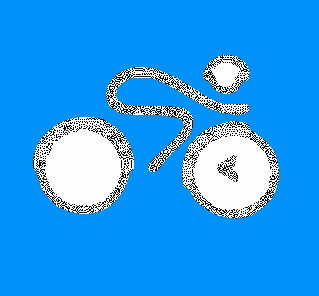| Newsletter - 2007 Archive |

|

|
Cycling Club |

|

|
| Newsletter - 2007 Archive |

|

|
Cycling Club |

|

|
Next--->
|
----Emily Carr A PBP Parable----The
Blind Men and the Elephant Bill Bryant in his "A Short History of Paris-Brest-Paris," concludes the 1200 km Paris-Brest-Paris or "PBP" is "a grueling test of human endurance and cycling ability." I culminated my first full year of randonneuring by completing this year's PBP. While I never heard of PBP until last year, I quickly became enthralled with the mystique surrounding this great event. While being caught up in training and riding many brevets this year, I also began observing a long list of contradictions concerning riding PBP. It has since dawned on me that the perfect parable or metaphor for this legendary event is the ancient Indian tale of the blind men and the elephant. While there are different versions of this old story, a group of blind men touch an elephant (which I suggest is PBP) to learn what it is like. One blind man feels a leg and concludes the elephant is like a pillar; the one who feels a tail says the elephant is like a rope; another feels the trunk and says the elephant is like a tree branch; the one who feels the ear says the elephant is like a hand fan; the one who feels the belly assumes the elephant is like a wall while the blind man who feels the tusk concludes the elephant is like a spear. While each blind man was partly correct, it is easy to jump to conclusions based on limited experience and first impressions. I read and listened to the words of many anciens and anciennes of PBP and I became amazed at the myriad of seemingly contradictory answers to my naive inquiries. How hilly is PBP? I have had the route described as "easy, rolling terrain" that I would have no problems with, to "very hilly and demanding." I like, on the other hand, how an 1899 guide to cycling in Ireland charmingly described a local route: "fairly level with a strong upward tendency." Most of the roads to Brest have "a strong upward tendency" usually followed by braking to negotiate obstacles, riders, cheering on-lookers, tight turns, roundabouts, or the sight of a local patisserie. While there were some "fairly level" sections, my bicycle seemed to be always moving up or down a hill. A hilly brevet on Vancouver Island is a very good facsimile of PBP. And how are the roads on PBP? Most of what I read or heard warned of rough roads and resulting numb fingers and hands. Yet I found that I was constantly praising the smoothness of the French country pavement. While intersections, villages and roundabouts often had some brick or cobblestones, I was left impressed with the general quality and cleanliness of the roads. In 1227 km, I saw broken glass only once. Of course, I am comparing this to the rough, often chip-sealed roads of Vancouver Island. Opinions of the controls also varied greatly. While being warned of huge line-ups at controls, I never had to wait for more than 1 or 2 people and the same held true for purchasing food. While the facilities at controls were often spread out, I was pleasantly surprised what little time was needed to pass through a control. However, there were a multitude of pleasant diversions that I allowed to occupy my time---talking to people, sampling pastries, embarrassing myself with my feeble French, enjoying another beer or just avoiding the continual rain. And
then there were my inquiries about route finding. Some people
made it clear I should have no problem as the route is well-marked
while others warned that I be prepared to end up off route at
least sometimes. This latter opinion was most prophetic. My poor
eyesight coupled with wet weather resulted in me spending altogether
about 3 hours off route! What is the best starting time? What equipment should I take? Do I need extra food? There are as many answers to these questions as there are riders. There are so many facets to PBP that answers became just different aspects of the same "elephant." Consider the blind fellow I met riding at the rear of a tandem or another couple on a tandem with the "stoker" facing backwards----now what different experiences they must have felt and witnessed! Or imagine the impressions of an English rider on a 1920's 2-speed bicycle that required peddling backwards for the second speed. Unlike almost 30% of other riders, he finished with his long string of garlic still attached to his antique steed. Other than having to ride 1227 km and meet the time requirements at various controls, it is hard to establish many facts about riding a PBP. There were over 5000 riders this year and just as many versions of the same event. However, in describing the elephant that is PBP, it is possible to find some consensus. Riders keep returning in increasing numbers to experience PBP because of something bigger than any facts can portray. There is an underlying spirit created by the intertwining of the warm, enthusiastic, cheering French public, a beautiful landscape and thousands of determined athletes. The mystique of PBP is found somewhere in this collective spirit. In 2011, I will be happily returning to experience more aspects of the enchanting, myth-like elephant that is known as PBP. September 17, 2007 |
_